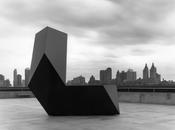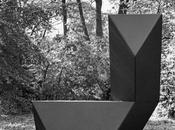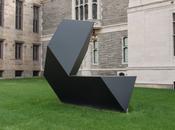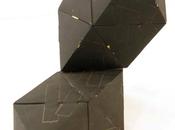
Steel, painted black
11'6" x 7'6" x 11'6"
Edition AP
Metropolitan Museum of Art, New York






“Following the same procedure as Willy, I had made a still more complicated affair which is not in the exhibition, The Gracehoper, in North Bennington. Later a friend asked me to make a large piece for his place in Ann Arbor. I set out to make something like a cave. I wanted to make the space and light as tangible as possible – in other ways it was to be the architecture of an idiot. I didn’t have the model of Gracehoper to work from, so I had to begin with a few separate units. After taping some of them together, I realized that by the method that I had in mind would take forever. Settling upon components made up of clusters such as the one I already had, I made another as a whole unit and stuck it to the first. Needless to say, the result was symmetrical. I thought it looked a bit like Brancusi and was so stunned by this that I stopped.”
-Tony Smith on Amaryllis